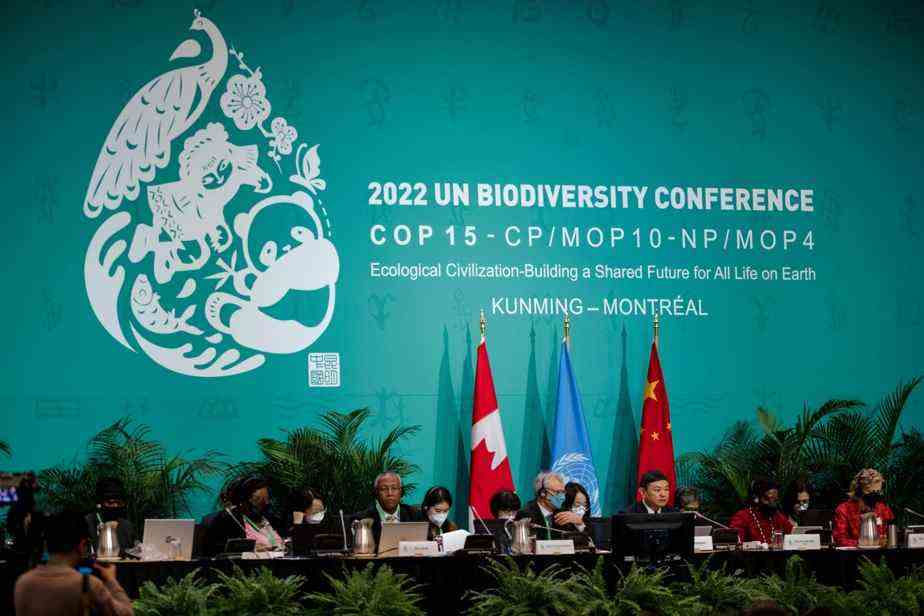(Montreal) The world has only eight days left to seal a historic agreement to stop the destruction of nature. But halfway through, COP15 has not made any major progress, both on the burning question of financing between North and South and on the flagship objective of protecting 30% of the planet.
The general opinion is that the negotiations will get tough on Thursday, when the environment ministers of the 196 members of the United Nations Convention on Biological Diversity (CBD) will take over from their delegates in Montreal.
But the chances of ending on December 19 with the approval of an ambitious “pact of peace with nature” – twenty objectives to stop the destruction of water, forests and living things by the end of the decade – are compromised if the draft agreement remains as it is.
Despite dozens of hours of work for the 5,000 delegates since December 3, the text is very late, weighed down by dozens of points still under negotiation. Only five of the 22 or 23 objectives envisaged had been settled.
“Governments are making progress, but not fast enough to prepare a specific text for the arrival of ministers,” regrets Alfred DeGemmis, senior official of the Wildlife Conservation Society (WCS).
Time is running out: a million species are threatened with extinction, a third of the land is severely degraded, soil fertility and water purity are compromised, while the oceans are threatened by pollution and climate change. climatic.
“We are still very far from the goal, but we see the light at the end of the tunnel”, wants to believe Marco Lambertini, boss of the international WWF, who notes “a more constructive involvement” than at the start of the summit.
“We see a market taking shape where the countries of the South say that they will not agree to commit to strong ambitions without corresponding funding in the face”, sums up Sébastien Treyer, director general of the IDDRI think tank.
Brazil reiterated on Saturday, on behalf of the African continent and 14 other countries, including India and Indonesia, its demand for “financial subsidies of at least $100 billion per year or 1% of global GDP up to in 2030”.
Global Biodiversity Fund
An increase deemed unrealistic by rich countries, for whom development aid dedicated to biodiversity in 2020 represented 10 billion dollars per year in 2020.
“If today we are at 10 billion, talking about 100 billion all of a sudden paralyzes the conversation”, warns the French ambassador to COP15, Sylvie Lemmet, while the rich countries have kept their commitments to double aid development in the previous decade.
The European Union also opposes the creation of a new global biodiversity fund, demanded by several countries by COP16 in 2024 in Turkey.
A solution deemed ineffective by the North, which prefers to push for a reform of global finance, public and private, and a better use of national resources. As well as the reduction of negative subsidies for nature, in particular to agriculture via fertilizers and pesticides, the subject of lively debates with Brazil and Argentina.
The United States, even if it is not part of the negotiation, for lack of having ratified the Convention on Biodiversity, plays a crucial role in the financial equation likely to unblock the agreement.
“We have replenished the Global Environment Facility (GEF) this year, the American contribution has been greater than ever,” US Ambassador for the Environment Monica Medina said on Monday. “Without a healthy environment, no economy in the world will be able to prosper in the long term,” she added.
To remove the obstacles, the eyes are turned towards China, president of the COP15, considered too “wait-and-see” or “passive” in the corridors of the summit.
A criticism swept away by the French ambassador, who salutes a “very involved Chinese presidency”, “listening to the parties” and which “commits bilaterally”.
On Monday, the negotiators resumed the debates behind closed doors. “It’s encouraging,” said UN CBD chief Elizabeth Mrema on Monday, but it remains a “rocky road.”
